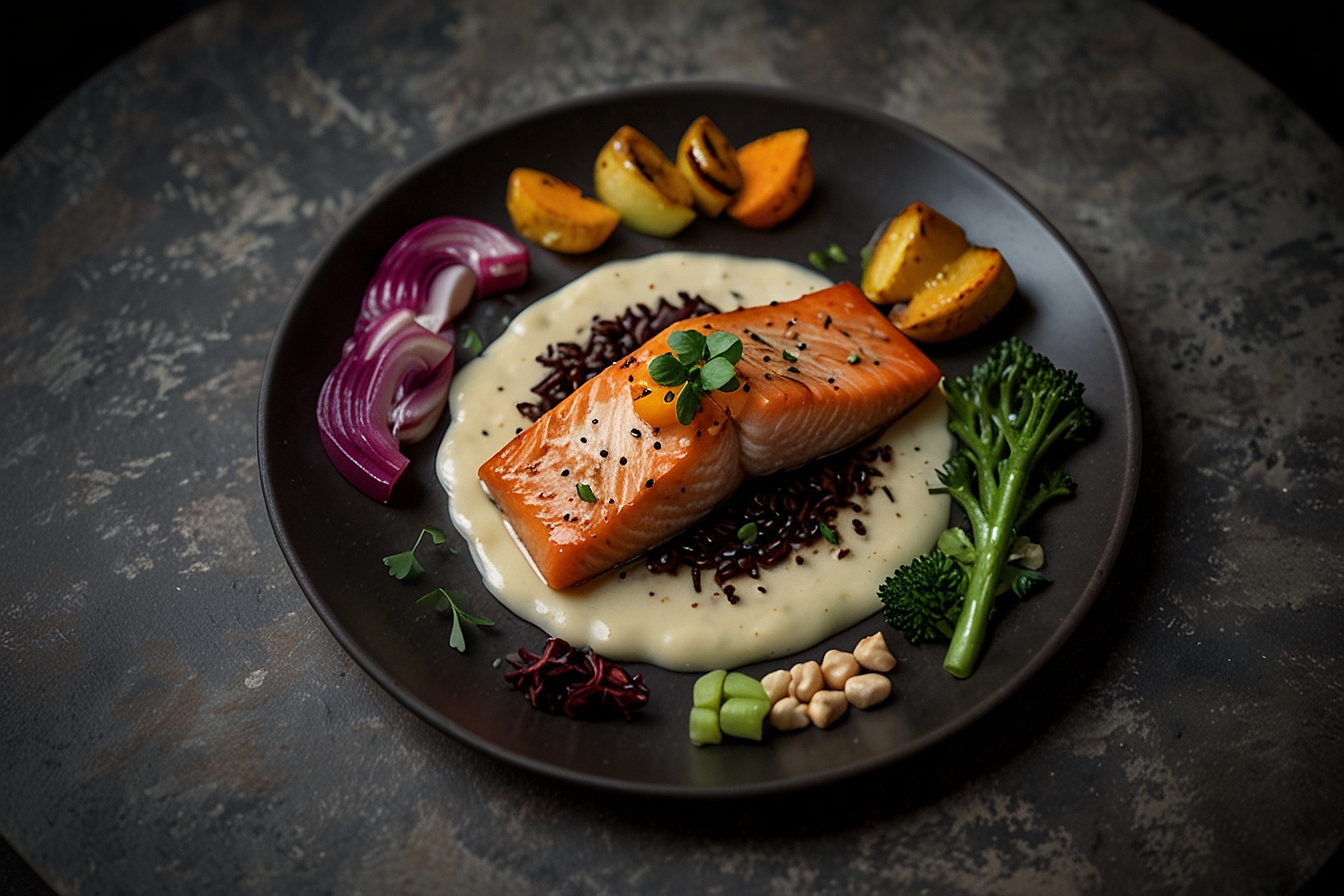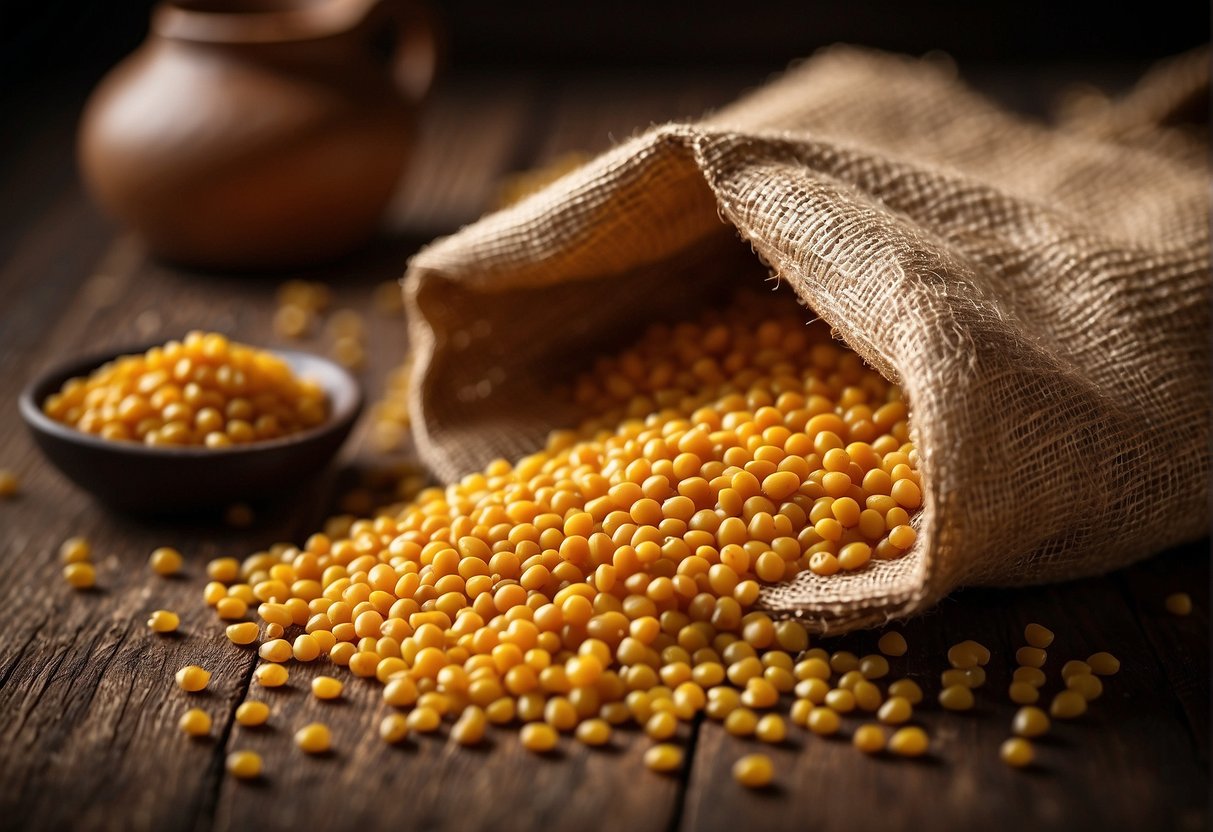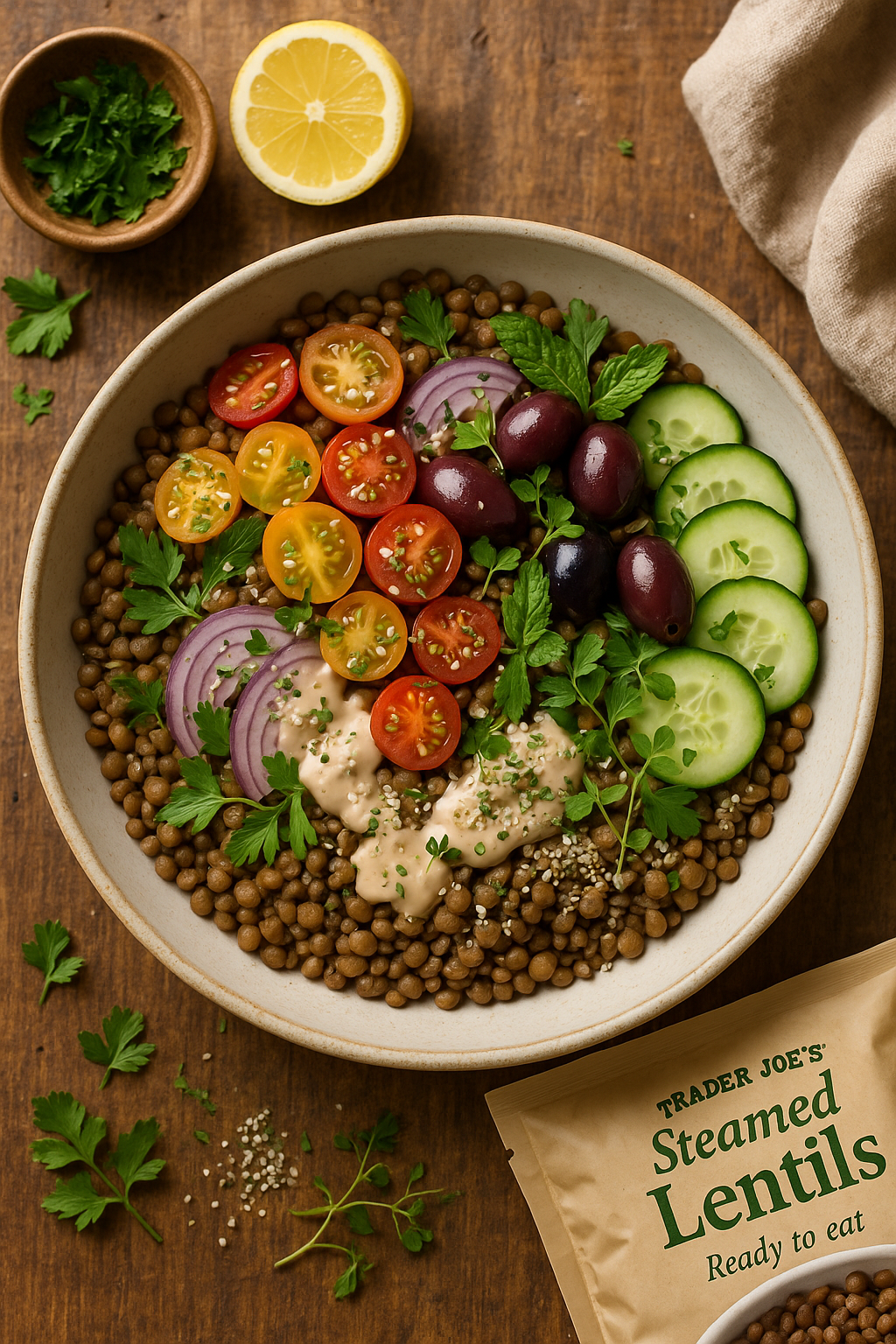Growing up in the UK, our family meals centered around classic British dishes. My dad and stepmom always made sure we had our Sunday roasts with Yorkshire pudding—a tradition that brought us together each week. Other staples included hearty Shepherd’s Pie and Friday night Fish and Chips. These traditional meals shaped my early culinary experience, creating lasting memories around the dinner table.
When I moved to Ontario, I discovered a vibrant East-West Fusion Cuisine scene that blended traditional Canadian dishes with international influences. From poutine and butter tarts to tourtière and samosas, Ontario’s multicultural food landscape opened my eyes to new possibilities in fusion cooking. This cultural exchange through food has enriched my understanding of both my British heritage and my new Canadian home.
Historical Context of Fusion Cuisine
I’ve always been fascinated by how East-West Fusion Cuisine came to be. When I’m in my kitchen experimenting with flavors, I often think about how my ingredients traveled ancient trade routes like the Silk Road. Just yesterday, I was adding saffron to my paella, and I paused to appreciate how this precious crimson spice made its way from Persian fields to my modern Canadian kitchen. Even my morning ritual of sprinkling Ceylon cinnamon on my porridge connects me to centuries of spice traders who braved oceans to bring these flavors west.
The kitchen is where history comes alive for me. Take kedgeree, for example – last Sunday, I made it for brunch, and as I folded smoked haddock into spice-infused rice, I thought about how this dish evolved from khichdi during the British colonial era in India. Each bite tells a story of cultural exchange, adaptation, and the beautiful complexity of blended culinary traditions. These aren’t just recipes to me; they’re edible history, each dish a delicious reminder of how flavors and cultures have always found ways to mingle and merge.
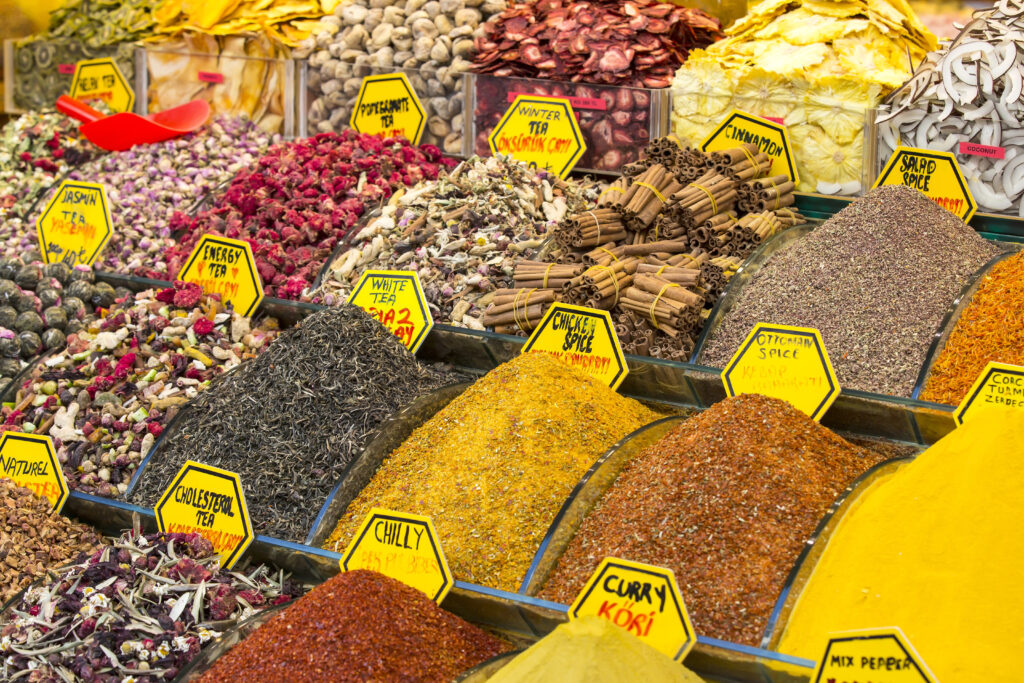
Evolution Over Time
Living in different countries has shown me firsthand how migration patterns have shaped our modern culinary landscape. I’ve watched immigrant families in my neighborhood adapt their traditional recipes to local ingredients, creating something entirely new yet somehow familiar. It’s beautiful to see how these adaptations aren’t just about survival – they’re about maintaining cultural identity while embracing change.
The rise of global travel and instant communication has transformed how we approach cooking. When I scroll through my social media feed, I see chefs from Tokyo to Toronto experimenting with flavors that would have been unimaginable a few decades ago. I remember the first time I tried sushi in London back in the ’80’s – it felt exotic and strange. Now, California rolls are as common as sandwiches in many cities, and I regularly make fusion sushi rolls in my own kitchen.
Key Characteristics of East-West Fusion Cuisine
Flavor Profiles
In my culinary experiments, I’ve learned that the magic of fusion cuisine lies in balancing different flavor profiles. I love playing with the interplay of sweet, sour, salty, and umami elements from both Eastern and Western traditions. Just last week, I created edamame sushi for my family. Watching their faces light up as they bit into this combination of fresh vegetables and Japanese seasonings was priceless.
One of my favorite creations is a modern take on traditional Pad Thai. The tangy tamarind sauce perfectly complements the crispy rice noodles and fresh bean sprouts, creating a delightful textural experience. I’ve discovered that unexpected ingredients often lead to wonderful surprises—like incorporating miso in salad dressings or adding lemongrass to chicken soup.
Techniques and Ingredients
My kitchen has become a laboratory where Eastern and Western cooking techniques meet. I’ve learned to combine traditional Chinese stir-frying with Italian pasta-making, creating dishes that honor both culinary traditions. I once tried making fusion pasta carbonara in my wok – the high heat brought out an incredible smoky aroma while preserving the creamy essence of the Italian classic.
Combining a steel core for even heat distribution with a ceramic finish, the All-Clad Fusiontec Universal Pan is versatile and stylish. It’s oven-safe up to 500°F, induction-friendly, and dishwasher-safe, making it ideal for various fusion cooking techniques. Its sleek design and durable construction make it a valuable addition to any kitchen.

All-Clad Fusiontec Universal Pan
- FExtremely durable, thick steel core heats steadily and evenly; ideal for searing, browning, and braising.
- The natural ceramic finish is ultra-durable, resisting chips & scratches, and while ceramic is not considered a nonstick coating, it does resist stains and is easy to clean
- Stainless-steel lid to reduce evaporation and keep soups flavorful and hearty
- Drip-free pouring rim for transferring sauces and liquids neatly and handcrafted stainless steel handles secured for comfort and strength
A Tale of Friendship and Food
Remember my friend, Beth, whom I met in a social media group? She’s from the Philippines, and whenever we talk on Messenger or Skype, we exchange recipes. She asks for healthy recipes, smoothies, or salads so she can try them too. I would also ask her about the recipe for the famous “pork adobo.“
There was a time I sent her a photo of a salad I ordered when I went out with friends. She was envious and ended up making her own salad with a twist.
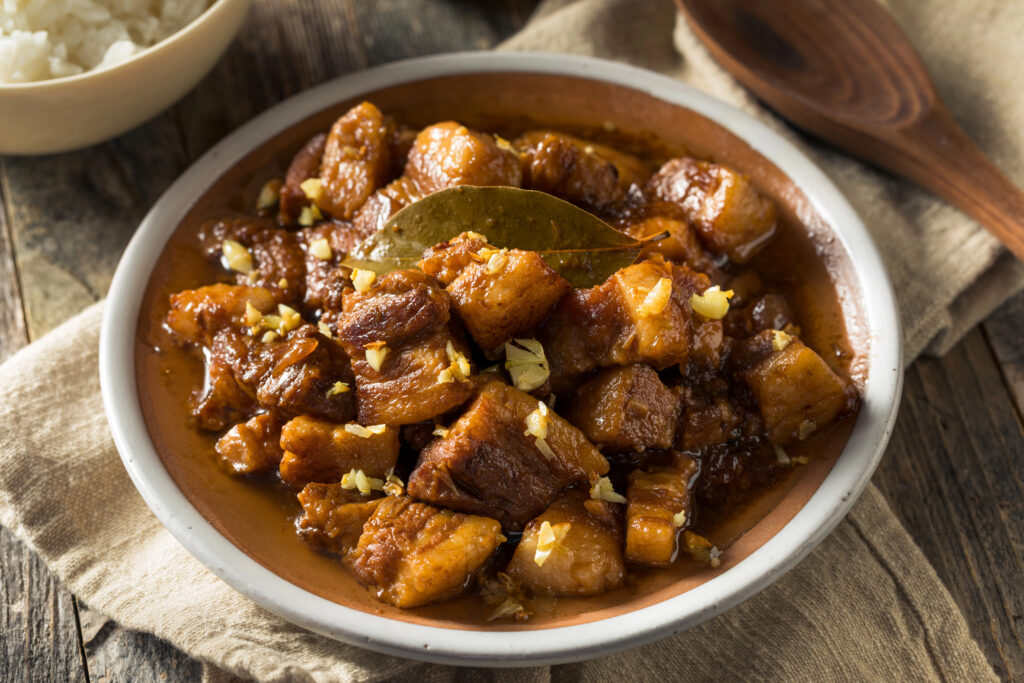
Beth introduced me to a colleague named Maricee, who’s into cooking. I remember she told me that she was very busy last Christmas with orders. She was making Filipino dishes like pork adobo, Relyenong Bangus (Stuffed Milkfish), Pancit (noodles), and other famous dishes that Filipinos serve during Christmas. She gladly shared her recipes.
This Sunday, I will try the pork adobo with a European twist. I hope my husband, Bruce, and my son, James, will love it. I’m keeping my fingers crossed.
Fusion Recipes for the Modern Kitchen
Healthy Chicken Adobo with Mediterranean Herbs
A healthier take on the Filipino classic with a Mediterranean twist
Ingredients:
- 2 lbs organic chicken thighs, skin removed
- 1/4 cup apple cider vinegar
- 1/4 cup coconut aminos (instead of soy sauce)
- 8 garlic cloves, minced
- 1 tablespoon fresh rosemary, chopped
- 1 tablespoon fresh thyme
- 2 bay leaves
- 1 teaspoon black peppercorns
- 2 tablespoons olive oil
- 1 cup low-sodium chicken broth
- Fresh parsley for garnish
Instructions:
- Combine vinegar, coconut aminos, garlic, herbs, and peppercorns in a bowl
- Marinate chicken for 2 hours
- Heat olive oil in a large pot
- Brown chicken pieces, then add marinade and broth
- Simmer for 35-40 minutes until tender
- Reduce sauce until slightly thickened
- Garnish with fresh parsley
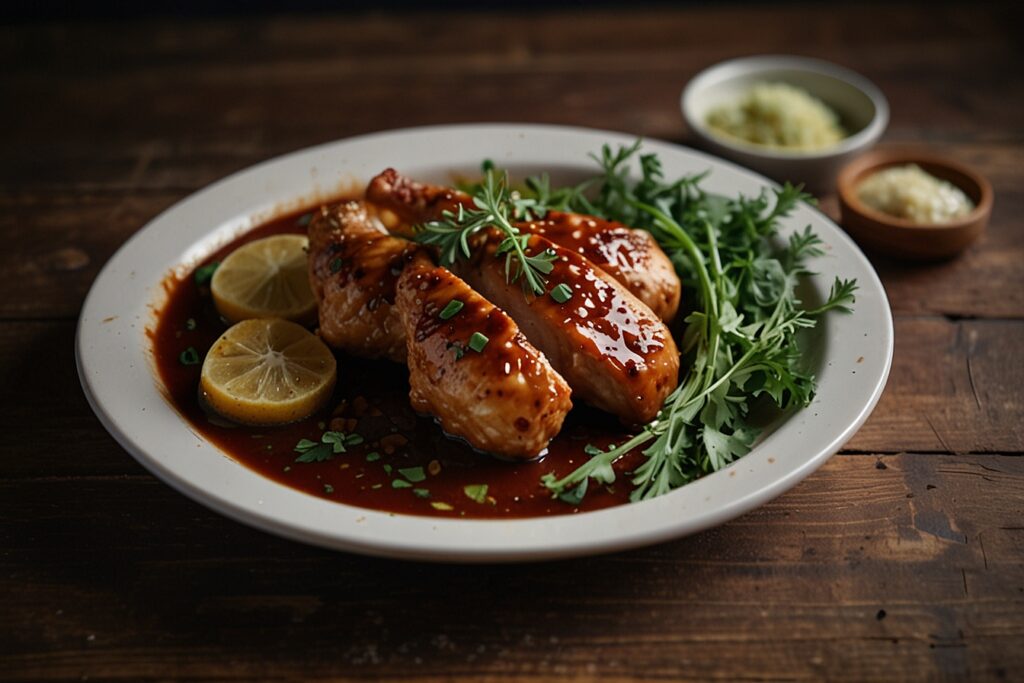
Fusion Curry Quinoa Bowl
A healthy blend of Indian curry and Western grain bowl
Ingredients:
- 2 cups quinoa
- 1 can light coconut milk
- 2 tablespoons yellow curry powder
- 1 sweet potato, cubed
- 2 cups baby spinach
- 1 can chickpeas, drained
- 1 red bell pepper, sliced
- 1 tablespoon coconut oil
- Fresh lime juice
- Greek yogurt for serving (optional)
- Fresh cilantro
Instructions:
- Cook quinoa according to package instructions
- Roast sweet potato and bell pepper with curry powder
- Sauté chickpeas and spinach
- Combine all ingredients in bowls
- Top with yogurt and cilantro
- Squeeze fresh lime juice before serving
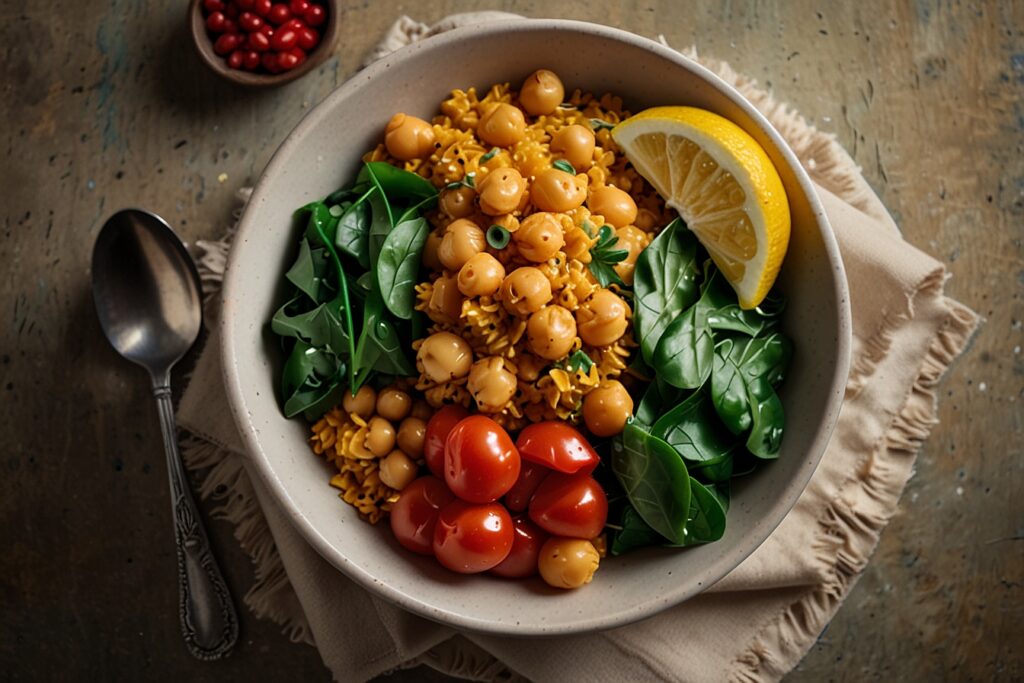
Renowned for its superior heat retention and even cooking, the Le Creuset Dutch Oven is perfect for preparing a variety of fusion dishes, from slow-cooked stews to braised meats. Its durable enameled surface ensures easy cleaning and adds a touch of elegance to your kitchen. Available in various sizes and vibrant colors, it complements any kitchen decor.

Le Creuset Dutch Oven
- Enameled cast iron delivers superior heat distribution and retention
- Ready to use, requires no seasoning
- Easy-to-clean and durable enamel resists dulling, staining, chipping and cracking
- Light colored smooth interior enamel allows easy monitoring of cooking progress
Vietnamese-French Beef Stew (Phở Bourguignon)
A healthy fusion of Vietnamese phở and French beef bourguignon
Ingredients:
- 2 lbs grass-fed beef chuck, cubed
- 4 cups beef bone broth
- 2 onions, sliced
- 4 carrots, chopped
- 2 stalks lemongrass
- 1 cinnamon stick
- 2 star anise
- 1 tablespoon fish sauce
- 1 cup red wine
- Rice noodles or zucchini noodles
- Bean sprouts, fresh herbs, lime wedges for serving
Instructions:
- Brown beef in batches
- Sauté onions and carrots
- Add wine and reduce
- Add broth and spices
- Simmer for 2 hours until tender
- Serve over noodles with traditional phở garnishes
These recipes represent my journey through different culinary traditions, combining the best of both worlds while keeping health and nutrition in mind. Each dish tells a story of cultural exchange and innovation, proving that healthy eating can be both exciting and delicious.
Sharing Food Moments Across Borders
A few weeks ago, I went out with friends to a local bistro, and I couldn’t resist sharing my meal photos with Beth. I ordered their classic French onion soup, which came in a traditional white ceramic crock, topped with perfectly golden-brown melted cheese that created those irresistible crispy edges. The broth underneath was rich and deeply flavored – exactly what you’d want on a cool day.
I also got their Mediterranean salad, a fresh combination of crisp lettuce, juicy tomatoes, and cucumbers, all topped with crumbled feta cheese. The olive garnish and what looked like endive leaves added a nice sophisticated touch. It was exactly the kind of light, refreshing dish that balances out a hearty soup.
When I sent these photos to Beth, she was immediately inspired! She told me she’d never tried French onion soup before, but the photo made her mouth water. The next day, she messaged me saying she’d created her own version of the salad, giving it a Filipino twist with some local ingredients she had on hand. She promised to send me photos of her creation, but in typical Beth fashion, she got so excited about eating it that she forgot to take pictures! We had a good laugh about that during our next video call.
It’s these little exchanges that make our friendship so special – how food becomes a bridge between our two worlds, inspiring us to try new things and put our own spin on classic dishes.
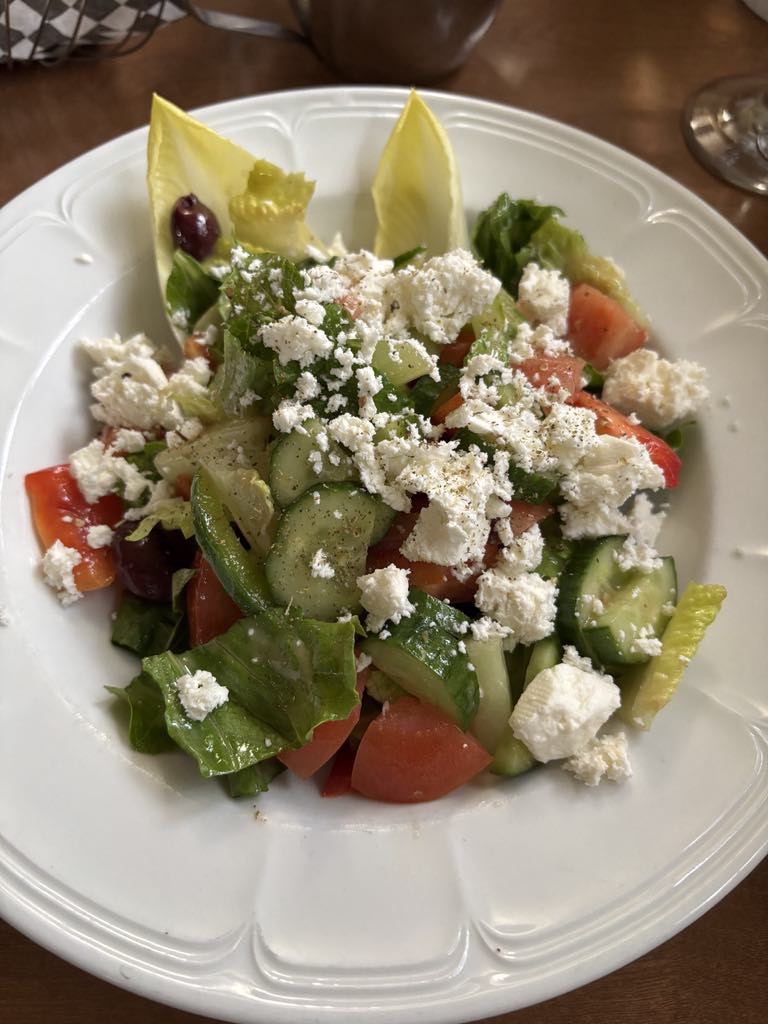
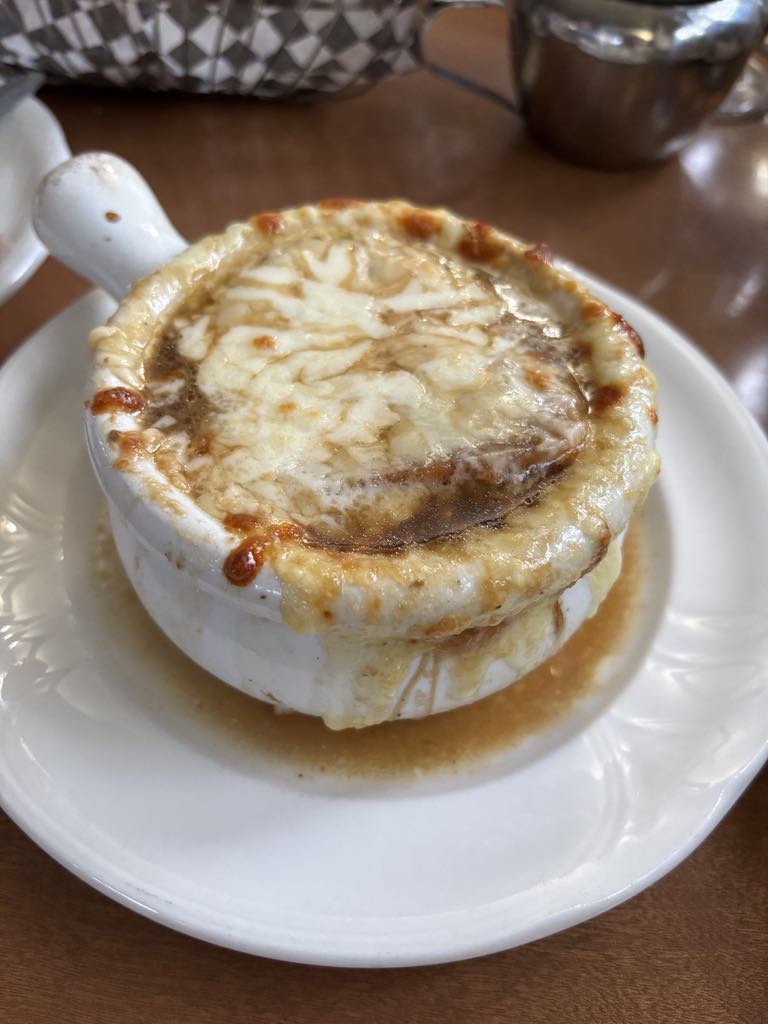
The Digital Age of Fusion Cuisine
Professional chefs are increasingly embracing East-West fusion cuisine, combining traditional techniques with modern interpretations. Social media has further transformed how we approach culinary innovation, connecting chefs worldwide.
The other day, a YouTube video titled “East Meets West Fusion Dish Challenge on MasterChef Singapore” appeared on my mobile screen. The contestants were tasked with creating a dish using basil and veal sweetbreads as the primary ingredients.
This reflects a broader trend where renowned restaurants are experimenting with cross-cultural flavors, offering tasting menus that showcase innovative combinations like miso-glazed black cod with Mediterranean herbs or curry-spiced risotto with Asian mushrooms.
Regional Inspirations
The Canadian Mosaic
Living in Ontario has exposed me to an incredible variety of fusion cuisines. In Toronto’s diverse neighborhoods, I’ve discovered Korean-Mexican tacos, Indian-Italian pasta, and Chinese-Jamaican fusion restaurants. Each represents a unique story of immigration, adaptation, and creativity. There are many Asian restaurants in Markham that I haven’t explored yet, but I’m looking forward to discovering their unique flavors and fusion offerings soon.
British Asian Influence
My time in the UK showed me how deeply South Asian cuisine has influenced British food culture. The beloved chicken tikka masala is perhaps the most famous example, but I’ve seen everything from curry-spiced fish and chips to masala-spiced Yorkshire puddings. These innovations show how fusion cuisine continues to evolve and surprise.
The Art of Fusion: Tips from My Kitchen
Through years of experimenting with East-West fusion cuisine, I’ve learned some valuable lessons:
- Understand the Basics First: Before combining cuisines, it’s essential to understand what makes each one special. I spent months perfecting traditional Pad Thai before attempting my fusion versions.
- Start with Simple Combinations: Begin with small changes to familiar dishes. Adding gochujang to your regular mac and cheese is less risky than attempting a complete fusion dish from scratch.
- Respect Traditional Ingredients: While substitutions are sometimes necessary, try to maintain the essential character of traditional dishes. When I make my fusion adobo, I might add Mediterranean herbs, but I never skip the vinegar and garlic that define the dish.
- Balance is Key: Whether combining flavors or techniques, maintaining balance is crucial. I learned this the hard way when I once added too much wasabi to a mashed potato recipe!
These principles have guided my journey through East-West fusion cuisine, helping me create dishes that celebrate the best of both worlds while honoring their origins.
For creating smooth purees, sauces, and blends essential in fusion cuisine, the Vitamix Propel Series 750 Blender offers professional-grade performance. With its powerful motor and precise control, it handles a variety of ingredients with ease, ensuring perfect textures for your culinary creations. Its sleek design and durable build make it a long-lasting investment for serious home cooks.

Vitamix Propel Series 750 Blender
- The new Propel Series combines iconic Vitamix performance with the convenience of preset blending programs, making it easier than ever to include more whole-food ingredients in every meal and snack
- Convenient Program Settings: Enjoy 5 preset options – the most we offer – for Smoothie, Hot Soup, Frozen Dessert, Dips & Spread, and Self-Cleaning program settings ensure walk-away convenience and consistent results
- Take Control: Customize texture with Variable Speed Control and Pulse feature for precise blending results from velvety smoothe purees to chunky dips
- Easy Cleanup: Just blend warm water and a drop of dish soap at your machine’s highest speed, and watch it self-clean in 60 seconds or less-no disassembly required
Embracing the Future: Sustainable Fusion and Culinary Creativity
As I continue my culinary journey, I’m excited about the future of fusion cuisine. More home cooks are experimenting with global flavors, and social media has made it easier than ever to share ideas and techniques across cultures.
One trend I’m particularly passionate about is sustainable fusion cooking. I’ve been experimenting with plant-based versions of traditional dishes, like my mushroom-based “fish” sauce, which combines Asian umami with Western preservation techniques. It’s not quite the same as the traditional version, but it represents an important step toward more sustainable cooking practices.
Modern kitchen technology is also reshaping how we approach fusion cooking. My smart cooker helps me perfect the timing for different rice varieties, while online communities allow me to troubleshoot recipes and source unique ingredients. Despite these advancements, fusion cooking remains deeply personal and intuitive—a celebration of creativity, tradition, and the connections we build through food.
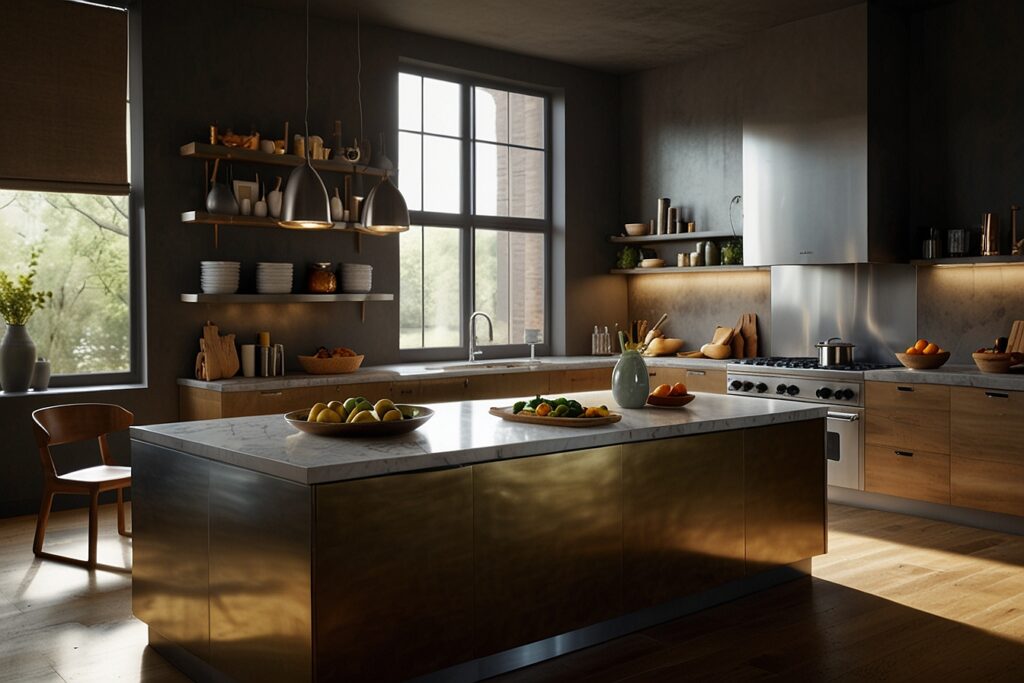
Fusion Cooking: Adaptation, Pantry Tips, and Cultural Connections
Starting my journey in fusion cuisine has already provided some interesting insights.
The art of adaptation is essential in fusion cooking. When specific ingredients aren’t available, creative substitutions can work well. For instance, lime zest and lemongrass can substitute for harder-to-find ingredients in Thai-inspired dishes. These adaptations often lead to intriguing flavor combinations.
Building a basic fusion pantry is helpful. Having ingredients from different culinary traditions enables experimentation. Common items like miso paste, olive oil, and various spice blends provide a solid foundation for creating fusion dishes.
Sharing these culinary experiments with others adds another dimension to the experience. Whether it’s a simple family dinner or a casual gathering, fusion dishes often spark interesting conversations about food and traditions.
Final Thoughts
Throughout this exploration of East-West fusion cuisine, we’ve journeyed through diverse culinary landscapes, from traditional British roasts to innovative Asian-European combinations. We’ve discovered how fusion cuisine bridges cultures, transforms traditional recipes, and creates exciting new flavors that challenge our culinary assumptions. From Vietnamese-inspired shepherd’s pie to green tea tiramisu, each dish represents a bold step in culinary evolution.
Food is indeed like friendship—when you discover the good characteristics of a person, you want to be part of their life. The same holds true with food: when you find a taste that delights your palate, it becomes a part of your table. There is nothing wrong with fusion; in fact, it allows us to discover new tastes, flavors, and ingredients that we didn’t know would make such a difference. The beauty of fusion lies in its ability to bring together the best of different worlds, creating something entirely new yet familiar—just as friendships enrich our lives with new perspectives and experiences.
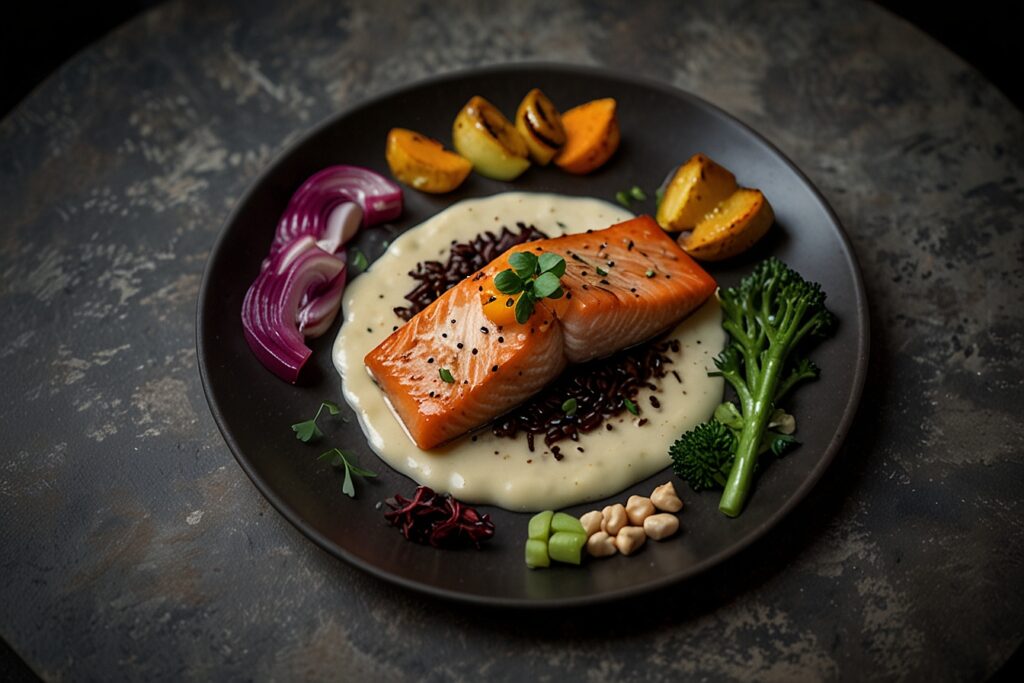
*We may earn a commission for purchases made using our links. Please see our disclosure to learn more.

